 Trichopria columbiana is a parasitoid of Hydrellia fly species. Depending on the ecological role of the host species, it can have a positive or negative effect on biological control. Some Hydrellia species feed on the invasive aquatic weed hydrilla. After its introduction into the U.S. by the aquarium industry in the 1950s (Langeland 1996), various control methods, including biological control, were developed and used to manage infestations. Classical biological control studies were initiated in the 1970s, which led to the release of four insects in the U.S., two of which were the leaf-mining ephydrid flies, Hydrellia pakistanae and Hydrellia balciunasi. Despite successful establishment and range expansion of the Asian hydrilla leaf mining fly, Hydrellia pakistanae, population levels of the insect and associated plant damage have remained low. One of the potentially limiting biotic factors is parasitism by the native endoparasitic wasp Trichopria columbiana. This 6-page fact sheet was written by Byron R. Coon, Nathan E. Harms, Michael J. Grodowitz, Emma N.I. Weeks, and James P. Cuda, and published by the UF Department of Entomology and Nematology, June 2014.
Trichopria columbiana is a parasitoid of Hydrellia fly species. Depending on the ecological role of the host species, it can have a positive or negative effect on biological control. Some Hydrellia species feed on the invasive aquatic weed hydrilla. After its introduction into the U.S. by the aquarium industry in the 1950s (Langeland 1996), various control methods, including biological control, were developed and used to manage infestations. Classical biological control studies were initiated in the 1970s, which led to the release of four insects in the U.S., two of which were the leaf-mining ephydrid flies, Hydrellia pakistanae and Hydrellia balciunasi. Despite successful establishment and range expansion of the Asian hydrilla leaf mining fly, Hydrellia pakistanae, population levels of the insect and associated plant damage have remained low. One of the potentially limiting biotic factors is parasitism by the native endoparasitic wasp Trichopria columbiana. This 6-page fact sheet was written by Byron R. Coon, Nathan E. Harms, Michael J. Grodowitz, Emma N.I. Weeks, and James P. Cuda, and published by the UF Department of Entomology and Nematology, June 2014.
http://edis.ifas.ufl.edu/in1040
Tag: E. N. I. Weeks
Hydrilla tuber weevil Bagous affinis Hustache (Insecta: Coleoptera: Curculionidae)
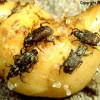 Bagous affinis Hustache is a semi-aquatic weevil that feeds on the aquatic invasive plant Hydrilla verticillata (L.f.) Royle. The larvae of the weevil mine hydrilla tubers, and the adults feed on the submerged stems and leaves. The weevil was discovered during surveys for biological control agents for hydrilla in Pakistan in 1980 and was first introduced to the U.S. in Florida from India in 1987. This 5-page fact sheet was written by Emma Weeks, and published by the UF Department of Entomology and Nematology, June 2014.
Bagous affinis Hustache is a semi-aquatic weevil that feeds on the aquatic invasive plant Hydrilla verticillata (L.f.) Royle. The larvae of the weevil mine hydrilla tubers, and the adults feed on the submerged stems and leaves. The weevil was discovered during surveys for biological control agents for hydrilla in Pakistan in 1980 and was first introduced to the U.S. in Florida from India in 1987. This 5-page fact sheet was written by Emma Weeks, and published by the UF Department of Entomology and Nematology, June 2014.
http://edis.ifas.ufl.edu/in1039
Grass Carp, the White Amur: Ctenopharyngodon idella Cuvier and Valenciennes (Actinopterygii: Cyprinidae: Squaliobarbinae)
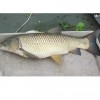 The grass carp, Ctenopharyngodon idella Cuvier and Valenciennes, was imported to the U.S. in 1963 as a biological control agent for hydrilla (Hydrilla verticilliata (L.f.) Royle) and other aquatic plants. Concerns of escape and reproduction, and the potential impacts that colonization of the fish could have on native flora and fauna led to research that developed a non-reproductive fish, which was equally effective in controlling hydrilla. In the warm waters of Florida, with abundant food, grass carp grow quickly at around 2 lbs/month or 0.91 kg/month and may achieve weights of 97 lbs (44 kg). Younger fish and female fish grow faster than older or male fish. Grass carp are the most effective biological control tool that has been identified for hydrilla. This 7-page fact sheet was written by Emma N.I. Weeks and Jeffrey E. Hill, and published by the UF Department of Entomology and Nematology, June 2014.
The grass carp, Ctenopharyngodon idella Cuvier and Valenciennes, was imported to the U.S. in 1963 as a biological control agent for hydrilla (Hydrilla verticilliata (L.f.) Royle) and other aquatic plants. Concerns of escape and reproduction, and the potential impacts that colonization of the fish could have on native flora and fauna led to research that developed a non-reproductive fish, which was equally effective in controlling hydrilla. In the warm waters of Florida, with abundant food, grass carp grow quickly at around 2 lbs/month or 0.91 kg/month and may achieve weights of 97 lbs (44 kg). Younger fish and female fish grow faster than older or male fish. Grass carp are the most effective biological control tool that has been identified for hydrilla. This 7-page fact sheet was written by Emma N.I. Weeks and Jeffrey E. Hill, and published by the UF Department of Entomology and Nematology, June 2014.
http://edis.ifas.ufl.edu/in1038
Hydrilla Stem Weevil Bagous Hydrillae O’Brien
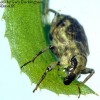 Bagous hydrillae O’Brien is a semi-aquatic weevil that feeds on the aquatic invasive weed Hydrilla verticillata (L.f.) Royle. Larvae of the weevil mine hydrilla stems and the adults feed on the stems and submerged leaves. This weevil was discovered during overseas surveys for biological control agents for hydrilla during the 1980s and was first introduced to the U.S. in Florida in 1991 after extensive host-specificity testing. This 5-page fact sheet was written by Emma Weeks, Jim Cuda, and Michael J. Grodowitz, and published by the UF Department of Entomology and Nematology, June 2014.
Bagous hydrillae O’Brien is a semi-aquatic weevil that feeds on the aquatic invasive weed Hydrilla verticillata (L.f.) Royle. Larvae of the weevil mine hydrilla stems and the adults feed on the stems and submerged leaves. This weevil was discovered during overseas surveys for biological control agents for hydrilla during the 1980s and was first introduced to the U.S. in Florida in 1991 after extensive host-specificity testing. This 5-page fact sheet was written by Emma Weeks, Jim Cuda, and Michael J. Grodowitz, and published by the UF Department of Entomology and Nematology, June 2014.
http://edis.ifas.ufl.edu/in1036
Hydrilla leaf mining flies (unofficial common name) Hydrellia spp. (Insecta: Diptera: Ephydridae)
http://edis.ifas.ufl.edu/in1034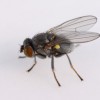 Several native and introduced species of flies in the genus Hydrellia are important because they feed on hydrilla (Hydrilla verticillata L.f. Royle), an invasive aquatic plant that has been classified as a Federal Noxious Weed. Hydrilla has invaded aquatic ecosystems in Florida and across the U.S. Larvae of Hydrellia spp. mine the leaves of hydrilla. In Florida, there are four species that have been associated with the invasive aquatic weed hydrilla: two native species and two species that were introduced for biological control of hydrilla. The native species are Hydrellia bilobifera Cresson and Hydrellia discursa Deonier. The introduced species are Hydrellia pakistanae Deonier and Hydrellia balciunasi Bock. This 6-page fact sheet was written by Emma Weeks and James Cuda, and published by the UF Department of Entomology and Nematology, April 2014.
Several native and introduced species of flies in the genus Hydrellia are important because they feed on hydrilla (Hydrilla verticillata L.f. Royle), an invasive aquatic plant that has been classified as a Federal Noxious Weed. Hydrilla has invaded aquatic ecosystems in Florida and across the U.S. Larvae of Hydrellia spp. mine the leaves of hydrilla. In Florida, there are four species that have been associated with the invasive aquatic weed hydrilla: two native species and two species that were introduced for biological control of hydrilla. The native species are Hydrellia bilobifera Cresson and Hydrellia discursa Deonier. The introduced species are Hydrellia pakistanae Deonier and Hydrellia balciunasi Bock. This 6-page fact sheet was written by Emma Weeks and James Cuda, and published by the UF Department of Entomology and Nematology, April 2014.
Hydrilla Integrated Management
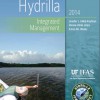 The focus of the book is on hydrilla management in Florida, although the described tactics are known and used in many of the 28 states in the United States with hydrilla infestations. Divided in seven chapters, the book guides the reader through a general introduction to the problems associated with hydrilla; identification of the plant; instructions for early detection of infestations including federal and state laws and regulations; detailed descriptions of available control tactics; proposals for integrated management plans; descriptions of insects and fish associated with hydrilla; and supplementary information including contacts for assistance when readers encounter infestations. This 144-page book was written by Jennifer L. Gillett-Kaufman, Verena-Ulrike Lietze, and Emma N.I. Weeks, and published by the UF Department of Entomology and Nematology, August 2014.
The focus of the book is on hydrilla management in Florida, although the described tactics are known and used in many of the 28 states in the United States with hydrilla infestations. Divided in seven chapters, the book guides the reader through a general introduction to the problems associated with hydrilla; identification of the plant; instructions for early detection of infestations including federal and state laws and regulations; detailed descriptions of available control tactics; proposals for integrated management plans; descriptions of insects and fish associated with hydrilla; and supplementary information including contacts for assistance when readers encounter infestations. This 144-page book was written by Jennifer L. Gillett-Kaufman, Verena-Ulrike Lietze, and Emma N.I. Weeks, and published by the UF Department of Entomology and Nematology, August 2014.
http://edis.ifas.ufl.edu/in1044
Hydrilla leafcutter moth (unofficial common name) Parapoynx diminutalis Snellen (Insecta: Lepidoptera: Crambidae)
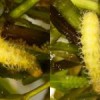 Parapoynx diminutalis Snellen is an adventive Asian moth with an aquatic larval stage. The moth is found associated with a variety of water bodies including river backwaters, lakes, and ponds. The aquatic larvae commonly attack hydrilla and other aquatic plants. The moth was identified in 1971 in India and Pakistan during scouting trips to attempt to determine potential biological control agents for hydrilla. Despite having potential for hydrilla destruction, the moth was declared to be a generalist feeder and unsuitable for release into U.S. water bodies for hydrilla control. But the moth was later found in Florida in 1976 by United States Department of Agriculture technicians who were testing herbicides for hydrilla control. The larvae found on hydrilla were observed to be eating the invasive weed. The pathway, method, or time of the moth’s arrival remains unknown. This 5-page fact sheet was written by Julie Baniszewski, Emma N.I. Weeks, and James P. Cuda, and published by the UF Department of Entomology and Nematology, January 2014.
Parapoynx diminutalis Snellen is an adventive Asian moth with an aquatic larval stage. The moth is found associated with a variety of water bodies including river backwaters, lakes, and ponds. The aquatic larvae commonly attack hydrilla and other aquatic plants. The moth was identified in 1971 in India and Pakistan during scouting trips to attempt to determine potential biological control agents for hydrilla. Despite having potential for hydrilla destruction, the moth was declared to be a generalist feeder and unsuitable for release into U.S. water bodies for hydrilla control. But the moth was later found in Florida in 1976 by United States Department of Agriculture technicians who were testing herbicides for hydrilla control. The larvae found on hydrilla were observed to be eating the invasive weed. The pathway, method, or time of the moth’s arrival remains unknown. This 5-page fact sheet was written by Julie Baniszewski, Emma N.I. Weeks, and James P. Cuda, and published by the UF Department of Entomology and Nematology, January 2014.
http://edis.ifas.ufl.edu/in1024
Cattle Grub Management (ENY290/IN979)
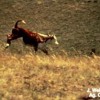 Immature warble flies, or cattle grubs, infest and harm livestock throughout the world. Warble flies also are known as “heel flies” because they cause cattle to kick at themselves, and “gad flies” because they cause cattle to “gad about” in an attempt to evade the flies. Two species of cattle grubs occur in the U.S.A., the common cattle grub, and the northern cattle grub. This 6-page fact sheet was written by P. E. Kaufman and E. N. I. Weeks, and published by the UF Department of Entomology and Nematology, March 2013.
Immature warble flies, or cattle grubs, infest and harm livestock throughout the world. Warble flies also are known as “heel flies” because they cause cattle to kick at themselves, and “gad flies” because they cause cattle to “gad about” in an attempt to evade the flies. Two species of cattle grubs occur in the U.S.A., the common cattle grub, and the northern cattle grub. This 6-page fact sheet was written by P. E. Kaufman and E. N. I. Weeks, and published by the UF Department of Entomology and Nematology, March 2013.
http://edis.ifas.ufl.edu/in979
Forced-Use Dust Bags for Management of External Parasites (ENY281/IG135)
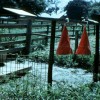 Dust bags are an effective method of horn fly and louse control. However, dust bags are only effective when hung in places where cattle are forced to use them. The best locations are areas where cattle must pass once or twice a day, or every other day, for instance between mineral boxes or water and pasture. During the field tests, forced-use dust bags provided an average of 90% horn fly control. Production was increased by an average of 34% over the normal management practice. This increase in production was equivalent to 1/3 lb/animal/day. This 5-page fact sheet was written by P. E. Kaufman and E. N. I. Weeks, and published by the UF Department of Entomology and Nematology, November 2012.
Dust bags are an effective method of horn fly and louse control. However, dust bags are only effective when hung in places where cattle are forced to use them. The best locations are areas where cattle must pass once or twice a day, or every other day, for instance between mineral boxes or water and pasture. During the field tests, forced-use dust bags provided an average of 90% horn fly control. Production was increased by an average of 34% over the normal management practice. This increase in production was equivalent to 1/3 lb/animal/day. This 5-page fact sheet was written by P. E. Kaufman and E. N. I. Weeks, and published by the UF Department of Entomology and Nematology, November 2012.
http://edis.ifas.ufl.edu/ig135
Pesticide Safety Around Animals (ENY272/IG128)
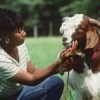 In general, infested animals are unhealthy and cannot be managed efficiently, so pesticides are commonly used to protect animals from pests. The successful control of pests requires careful mixing and application of recommended pesticides according to label directions. Besides ensuring the control of pests, applying pesticides at the recommended rate is necessary to prevent injury to the animal. This 5-page fact sheet was written by P. E. Kaufman and E. N. I. Weeks, and published by the UF Department of Entomology and Nematology, October 2012.
In general, infested animals are unhealthy and cannot be managed efficiently, so pesticides are commonly used to protect animals from pests. The successful control of pests requires careful mixing and application of recommended pesticides according to label directions. Besides ensuring the control of pests, applying pesticides at the recommended rate is necessary to prevent injury to the animal. This 5-page fact sheet was written by P. E. Kaufman and E. N. I. Weeks, and published by the UF Department of Entomology and Nematology, October 2012.
http://edis.ifas.ufl.edu/ig128
Mange in Companion Animals (ENY289/IN953)
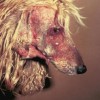 Mange is a persistent skin condition of mammals caused by infestation with parasitic mites. Mites are tiny arthropods, usually less than 1 mm in length and difficult to see with the naked eye. Adult mites have eight legs, and larvae have six. The effect of the mites on the animal’s skin, called “mange,” is the most visible sign of an infestation. This 6-page fact sheet describes several skin conditions commonly caused by parasitic mites in domestic animals. Written by E. N. I. Weeks and P. E. Kaufman, and published by the UF Department of Entomology and Nematology, September 2012.
Mange is a persistent skin condition of mammals caused by infestation with parasitic mites. Mites are tiny arthropods, usually less than 1 mm in length and difficult to see with the naked eye. Adult mites have eight legs, and larvae have six. The effect of the mites on the animal’s skin, called “mange,” is the most visible sign of an infestation. This 6-page fact sheet describes several skin conditions commonly caused by parasitic mites in domestic animals. Written by E. N. I. Weeks and P. E. Kaufman, and published by the UF Department of Entomology and Nematology, September 2012.
http://edis.ifas.ufl.edu/in953
Horn Fly Management (ENY288/IN952)
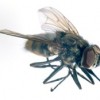 Horn flies are one of the livestock pests with the greatest impact on the health and productivity of cattle. Economic losses due to horn fly damage are estimated at $36 million annually in Florida alone. In the U.S.A. annual losses total between $700 million and $1 billion, with up to $60 million spent on insecticidal control. Horn fly damage is caused by blood feeding. The flies feed frequently and exclusively on blood, piercing the skin of cattle with their proboscis and taking around 20 small blood meals each day. Pain and irritation due to the constant presence of the flies and their bites causes defensive behavior in the cattle that prevents adequate food consumption and rest. This 4-page fact sheet was written by P. E. Kaufman and E. N. I. Weeks, and published by the UF Department of Entomology and Nematology, September 2012.
Horn flies are one of the livestock pests with the greatest impact on the health and productivity of cattle. Economic losses due to horn fly damage are estimated at $36 million annually in Florida alone. In the U.S.A. annual losses total between $700 million and $1 billion, with up to $60 million spent on insecticidal control. Horn fly damage is caused by blood feeding. The flies feed frequently and exclusively on blood, piercing the skin of cattle with their proboscis and taking around 20 small blood meals each day. Pain and irritation due to the constant presence of the flies and their bites causes defensive behavior in the cattle that prevents adequate food consumption and rest. This 4-page fact sheet was written by P. E. Kaufman and E. N. I. Weeks, and published by the UF Department of Entomology and Nematology, September 2012.
http://edis.ifas.ufl.edu/in952
Self-Treatment Methods for Livestock–Backrubbers (ENY279/IG134)
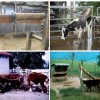 Back rubbers are a method of pesticide self-treatment for cattle. When bothered by insects or other pests, cattle tend to rub against objects. Backrubbers provide a rubbing surface that is treated with a pesticide. Cattle self-treat during rubbing, which reduces the number of flies, particularly horn flies, and parasites such as lice, on the animal. Backrubbers may be purchased commercially or constructed from easily available materials. A properly designed backrubber that supplies pesticide reliably to the animal can be a valuable addition to an integrated pest management program. This 4-page fact sheet was written by E. N. I. Weeks and P. E. Kaufman, and published by the UF Department of Entomology and Nematology, September 2012.
Back rubbers are a method of pesticide self-treatment for cattle. When bothered by insects or other pests, cattle tend to rub against objects. Backrubbers provide a rubbing surface that is treated with a pesticide. Cattle self-treat during rubbing, which reduces the number of flies, particularly horn flies, and parasites such as lice, on the animal. Backrubbers may be purchased commercially or constructed from easily available materials. A properly designed backrubber that supplies pesticide reliably to the animal can be a valuable addition to an integrated pest management program. This 4-page fact sheet was written by E. N. I. Weeks and P. E. Kaufman, and published by the UF Department of Entomology and Nematology, September 2012.
http://edis.ifas.ufl.edu/ig134
Stable Fly (Dog Fly) Control (ENY267/IG133)
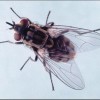 The stable fly is a blood-sucking filth fly of considerable importance to people, pets, livestock, and the tourist industry in Florida. Filth flies, including stable flies, exploit habitats and food sources created by human activities, such as farming. Stable flies primarily attack animals for a blood meal, but in the absence of an animal host, they will bite people. This 4-page fact sheet was written by P. E. Kaufman and E. N. I. Weeks, and published by the UF Department of Entomology and Nematology, August 2012.
The stable fly is a blood-sucking filth fly of considerable importance to people, pets, livestock, and the tourist industry in Florida. Filth flies, including stable flies, exploit habitats and food sources created by human activities, such as farming. Stable flies primarily attack animals for a blood meal, but in the absence of an animal host, they will bite people. This 4-page fact sheet was written by P. E. Kaufman and E. N. I. Weeks, and published by the UF Department of Entomology and Nematology, August 2012.
http://edis.ifas.ufl.edu/ig133